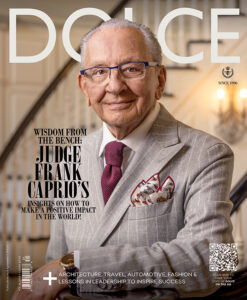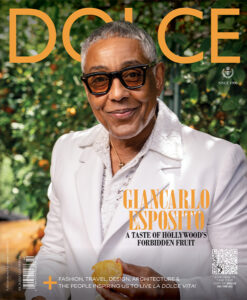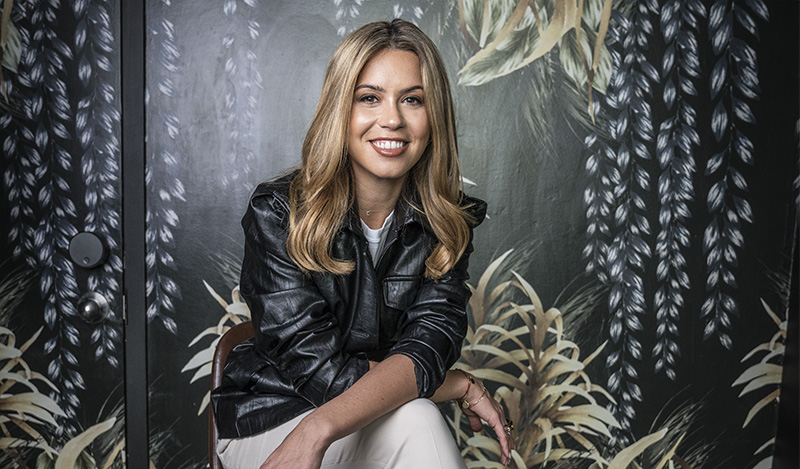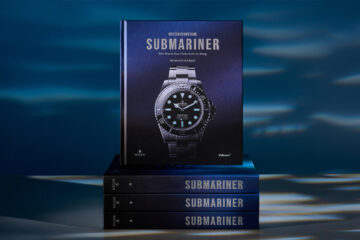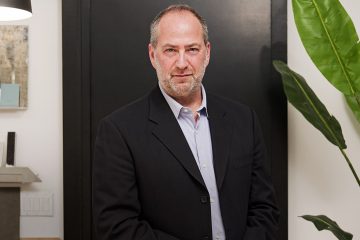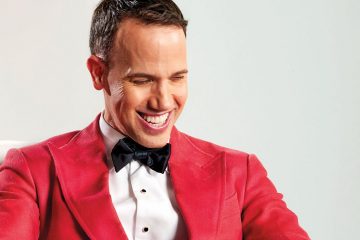Candice Kaye: A Life Led by Design
The textile designer and entrepreneur on choosing design over dance, the power of bespoke and moving to New York without a Plan B.
“When I founded Candice Kaye Design there was this gap in the market, where no one was doing bespoke, one-of-a-kind pieces at a reasonable price point, especially within hospitality,” begins Candice Kaye, textile designer and founder of her eponymous brand. “It was also during the rise of social media, and people wanting to take photos anywhere they were going. For the first time ever that was led by design, and so as long as you could see the design in the photographs, you knew where it came from.” It’s that same approach that’s seen her work provide a backdrop for DJ Khaled, Jimmy Butler, Lisa Hochstein and Trevor Noah, to name just a few.
Though Kaye is a textile designer today, she grew up dancing and saw it as something she would end up doing for a living. It was during her studies for interior design, however, where she was given the first taste of what would eventually become Candice Kaye Design. “It came to a point of choosing a dance career or going into school for interior design,” she says. Kaye chose interior design, but even though she dropped out of the program after three months, the seed had been sown. “We would do projects, and I was always concerned about the details more than where the window was or how the wall was shaped,” she continues. “I love interiors, but I don’t care where you put your couch or where your wall goes.”
After spending time travelling in Paris, where everything clicked into place after a visit to a fabric manufacturing warehouse, Kaye returned home enlivened and applied to study textile surface design at FIT in New York. “I remember there was no Plan B,” she says looking back. “I left everything for New York. And on my first day of school, the people in my class were real artists, and I remember walking around asking people how they mixed that colour and so on. Because I was so untrained, I think it worked to my advantage. When you’re trained, I feel you get so caught up in the rules of how it has to be done. People in the class had certain paintbrushes, and I would go to the dollar store and use any paintbrush because I didn’t know the difference.”
“Because I Was So Untrained, I Think It Worked To My Advantage. When You’re Trained, I Feel You Get So Caught Up In The Rules Of How It Has To Be Done”
Toward the end of the school year, Kaye secured her first client, an upstart Soho café called Maman, where she created four custom prints that would become the heart of the brand. Today, that same brand has numerous locations across New York and Toronto. Planta, a Toronto-and Miami-based restaurant dedicated to creating plant-based dishes, is another. Not only was it inspired by her project with Maman, but it was also her first client after moving back from New York. “That project sparked this idea of bespoke textiles that caught the attention of Steven Salm, the president and CEO of Chase Hospitality Group,” she says. “Steven saw the true value of bespoke and wanted something that exuded the feeling of the Beverly Hills hotel, but more updated. As the palm leaf wallpaper has been around forever, I had to make sure it was still iconic, but would be different enough to stand the test of time.”
Kaye also collaborated very closely with David Grutman and David “Papi” Einhorn to create and exotic, floral print for the Papi Steak restaurant. While there’s no doubt Kaye has an impressive portfolio of clients, she also sells her own collections that span wallpaper, rugs and patio umbrellas. And she plans to expand her brand into the world of plates, tablecloths and other homeware. Kaye’s also taken on a number of projects creating bespoke home designs. “High-end residential has been an extremely rewarding process for me,” she says. “Clients are able to receive something bespoke that’s completely their own, but in the form of a textile. That’s super exciting.” She recently saw the power of bespoke when designing a powder room for a client in New York’s East Village, where she created a life-sized hanging willow tree that covered the ceiling. The concept came from the nickname the client’s grandfather had given her. “The home is your safe space,” Kaye says. “Why buy a stock rug when we can create something that holds meaning, and you can keep forever and pass down to your children? Wallpaper becomes a hanging piece of art, and every hand-painted element tells a story.”
With plenty of future plans, Kaye also seems to just be getting started. “My company has evolved so much from what I thought it was to what I see coming,” she says. “In the future, I want to have these projects that are all-encompassing. The goal would be to design a whole hotel, where the rug matches the little details on the napkins and the tiles,” she explains, noting how much of an inspiration travel is to her process. “It’s being able to give you this complete experience, where you eat, sleep and drink. There are so many times I’ve walked into a hotel and it feels familiar. It would be amazing to create that for someone.”



